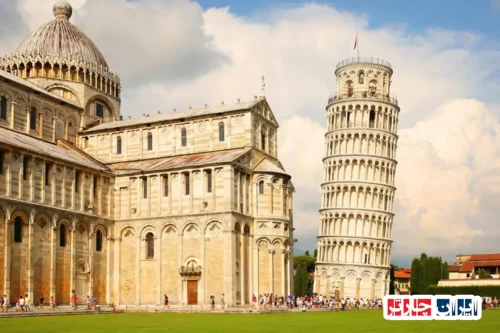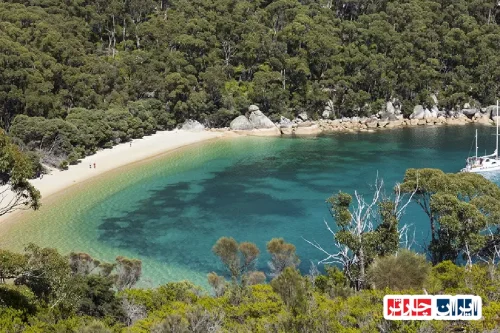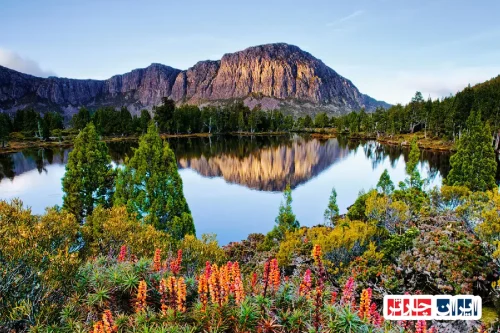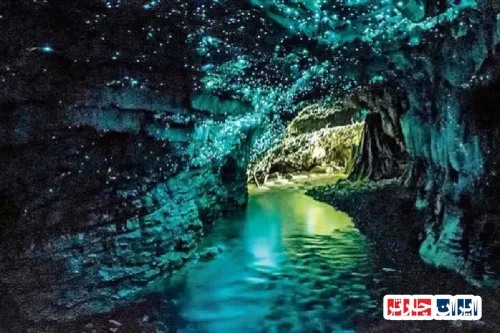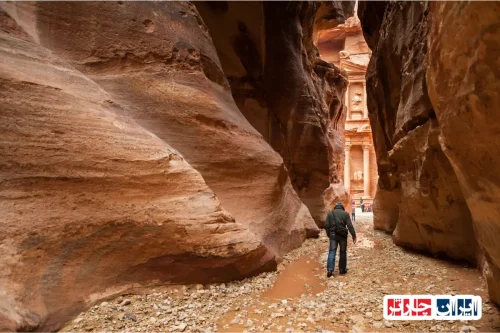Discover the Rich Heritage and Unique Architecture of Stone Town Zanzibar Tanzania
Stone Town Zanzibar Tanzania stands as a captivating historical hub that embodies centuries of cultural exchange, architectural marvels, and vibrant traditions. This UNESCO World Heritage site showcases a blend of Arab, Persian, Indian, and European influences, making it a fascinating destination for travelers seeking to explore the rich tapestry of East African history. Walking through the narrow, winding streets of Stone Town Zanzibar Tanzania reveals a treasure trove of ancient buildings, bustling markets, and stories of maritime trade that have shaped the region’s identity. The intricate wooden doors, coral stone structures, and ornate balconies reflect a unique architectural style that has been preserved over generations, offering a glimpse into the diverse cultural interactions that have defined this iconic city. Visitors can immerse themselves in the vibrant local culture, explore historic forts and palaces, and enjoy the lively atmosphere that continues to thrive in Stone Town Zanzibar Tanzania. This city not only serves as a testament to its glorious past but also as a vibrant center of contemporary life, where tradition and modernity coexist harmoniously. For those interested in history, architecture, and cultural diversity, Stone Town Zanzibar Tanzania remains an unmissable destination that encapsulates the spirit of East Africa’s coastal heritage.
Discover the Rich History of Stone Town Zanzibar: From Ancient Roots to Modern Heritage
Stone Town Zanzibar, Tanzania, is a captivating historical hub that dates back centuries, serving as a vital center for trade, culture, and diplomacy. Its origins trace to ancient times when it emerged as a prominent port for merchants traveling between Africa, the Middle East, and Asia. Over the centuries, this vibrant city has witnessed the rise and fall of empires, each leaving a unique mark on its architecture and cultural fabric. Today, Stone Town stands as a UNESCO World Heritage Site, preserving its rich history and offering visitors a glimpse into its fascinating past. Exploring the narrow alleys and historic buildings reveals stories of Swahili culture, Arab influence, and colonial legacies that have shaped the city’s identity. The evolution of Stone Town reflects a blend of diverse civilizations, making it a living museum of East African history. Its strategic location on Zanzibar Island made it a crucial node in ancient maritime trade routes, fostering economic prosperity and cultural exchange. Understanding the historical significance of Stone Town Zanzibar is essential for appreciating its role in regional development and global commerce. Visitors can walk through centuries-old markets, forts, and palaces that narrate tales of resilience, innovation, and cultural fusion. Preserving this heritage ensures that future generations can continue to learn from and be inspired by its enduring legacy.
Architectural Marvels of Stone Town Zanzibar: A Fusion of Arab, Persian, and European Styles
Stone Town Zanzibar, Tanzania, boasts an extraordinary architectural landscape that showcases a harmonious blend of Arab, Persian, and European influences. The buildings, constructed primarily from coral stone and mangrove timber, reflect centuries of cultural exchange and adaptation. Iconic structures such as the Old Fort, House of Wonders, and the Sultan’s Palace exemplify this eclectic style, featuring intricate carvings, arched doorways, and spacious courtyards. Arab traders introduced Islamic architectural elements, evident in the minarets and decorative motifs that adorn many mosques and residences. Persian influences are visible in the ornate window lattices and colorful facades, while colonial European architecture is represented through churches, government buildings, and merchant houses with neoclassical features. This architectural diversity not only enhances the city’s aesthetic appeal but also narrates the story of its multicultural past. Preservation of these structures is vital for maintaining the city’s authentic character and attracting cultural tourism. Walking through the labyrinth of streets reveals a living canvas of history, where each building tells a story of trade, conquest, and cultural resilience. The fusion of styles in Stone Town Zanzibar is a testament to its role as a melting pot of civilizations, making it a must-visit destination for architecture enthusiasts and history lovers alike.
Top Historic Landmarks and Cultural Attractions in Stone Town Zanzibar
Stone Town Zanzibar, Tanzania, is home to numerous historic landmarks that encapsulate its rich cultural heritage. The Old Fort, built in the 17th century, stands as a symbol of Zanzibar’s defensive history and colonial past. The House of Wonders, once the royal residence, is renowned for its impressive architecture and status as the first building in East Africa with electricity and an elevator. The Sultan’s Palace offers insights into the royal history and Swahili traditions, while the Anglican Cathedral of Christ is a reminder of the city’s colonial and religious history. Other notable sites include the Forodhani Gardens, a lively night market where visitors can experience local cuisine and vibrant street life, and the Hamamni Persian Baths, which reflect the Persian influence on the city’s development. Exploring these landmarks provides a comprehensive understanding of Zanzibar’s historical evolution and cultural diversity. The bustling markets, narrow streets, and ancient mosques further enrich the experience, offering authentic glimpses into daily life and local traditions. Preserving these sites is crucial for maintaining the city’s cultural identity and promoting sustainable tourism. Each monument and attraction contributes to the narrative of Stone Town’s enduring legacy as a center of trade, culture, and history in East Africa.
The Strategic Role of Stone Town Zanzibar in East African Maritime Trade
Stone Town Zanzibar, Tanzania, has historically played a pivotal role in maritime trade across East Africa and beyond. Its strategic location along the Indian Ocean made it a vital port for merchants engaged in the spice trade, slave trade, and the exchange of textiles, gold, and ivory. During the height of its prominence, the city served as a gateway connecting Africa with the Middle East, India, and Asia, facilitating cultural and economic exchanges that shaped regional development. The bustling port enabled the rise of a cosmopolitan society, where Arab, Persian, Indian, and African traders interacted regularly. This vibrant trade network contributed to Zanzibar’s wealth and influence, attracting colonial powers seeking control over lucrative routes. Today, the remnants of this maritime legacy are visible in the historic port facilities and trading houses that still line the waterfront. The city’s role as a maritime hub continues to influence its economy through tourism, fishing, and shipping industries. Understanding the importance of Stone Town Zanzibar’s strategic position helps appreciate its historical significance in shaping East Africa’s economic landscape. Visitors can explore old harbor areas, traditional dhow boats, and markets that echo its maritime past, reinforcing its reputation as a key player in regional trade networks.
Hidden Gems and Narrow Streets of Stone Town Zanzibar: Exploring Its Secret Corners
Stone Town Zanzibar, Tanzania, is a labyrinth of narrow streets and hidden alleys that invite explorers to uncover its lesser-known treasures. These winding pathways, once bustling trade routes, are lined with centuries-old buildings, vibrant markets, and quaint cafes. Walking through these secret corners reveals stories of local artisans, traditional crafts, and everyday life that have persisted over generations. Small courtyards, ancient mosques, and historic homes tucked away from the main roads offer authentic experiences away from tourist crowds. Discovering the city’s hidden gems, such as the secret gardens or abandoned warehouses, provides a deeper connection to its cultural fabric. The street art, local eateries, and artisan shops along these alleys showcase Zanzibar’s creative spirit and resilience. Preserving these narrow streets is essential for maintaining the city’s unique character and charm. Exploring these secret corners allows visitors to experience the true essence of Stone Town Zanzibar, where history and modern life intertwine seamlessly, creating a captivating journey into the city’s soul.
The Cultural Impact of Stone Town Zanzibar on East African Society
Stone Town Zanzibar, Tanzania, has profoundly influenced the cultural landscape of East Africa through centuries of trade, migration, and intercultural exchange. Its diverse population, comprising Swahili, Arab, Persian, Indian, and European communities, has fostered a rich tapestry of traditions, languages, and arts. This multicultural environment is reflected in the city’s music, dance, cuisine, and festivals, which blend elements from various cultures into a unique local identity. The city’s cultural impact extends beyond its borders, shaping regional art forms, storytelling, and religious practices. Traditional crafts such as wood carving, textiles, and jewelry-making thrive in the markets, showcasing local talent and heritage. Educational institutions and cultural centers in Stone Town promote the preservation of indigenous traditions and history. The city’s influence on East African society underscores its role as a melting pot of civilizations, fostering tolerance, innovation, and cultural pride. Visitors can immerse themselves in this vibrant cultural scene through performances, workshops, and community events that celebrate Zanzibar’s diverse legacy.
Conservation and Restoration of Heritage Sites in Stone Town Zanzibar
Preserving the historic charm of Stone Town Zanzibar, Tanzania, requires dedicated conservation and restoration efforts. Many of its buildings, monuments, and sites face threats from environmental factors, urban development, and neglect. Restoring these structures involves careful planning to maintain their original architectural features while ensuring structural stability. Techniques such as traditional coral stone repair, wooden restoration, and eco-friendly materials are employed to sustain authenticity. Collaboration between government agencies, heritage organizations, and local communities is essential for effective preservation. Education and awareness campaigns help foster community involvement and pride in safeguarding their cultural heritage. Implementing strict regulations and providing funding for restoration projects ensures that the city’s historic fabric remains intact for future generations. Conservation efforts not only protect the city’s identity but also boost sustainable tourism, contributing to local economies. Maintaining the integrity of Stone Town’s heritage sites is vital for honoring its past and securing its place as a global cultural treasure.
Natural Beauty and Scenic Views Around Stone Town Zanzibar
Beyond its historic and cultural attractions, Stone Town Zanzibar, Tanzania, offers stunning natural scenery that complements its urban charm. The pristine beaches along the Indian Ocean provide perfect spots for relaxation, water sports, and sunset viewing. Nearby coral reefs are ideal for snorkeling and diving, revealing vibrant marine life and colorful corals. The lush mangroves and coastal forests support diverse ecosystems, offering opportunities for eco-tourism and birdwatching. Scenic viewpoints atop historic buildings or hilltops provide panoramic vistas of the city, ocean, and surrounding islands. The tranquil beaches and azure waters create a serene environment for visitors seeking peace and natural beauty. Preserving these natural landscapes is crucial for maintaining the ecological balance and supporting sustainable tourism. Exploring the scenic surroundings of Stone Town Zanzibar enriches the travel experience, blending history with nature’s splendor and offering a holistic view of this extraordinary destination.
Frequently Asked Questions
- What is the historical significance of Stone Town Zanzibar?
- Stone Town Zanzibar is a UNESCO World Heritage Site with a rich history dating back centuries. It served as a vital port for trade between Africa, the Middle East, and Asia, witnessing the rise and fall of various empires. Its architecture reflects Swahili, Arab, Persian, and European influences, making it a living museum of East African history. The city played a crucial role in maritime trade routes, fostering economic prosperity and cultural exchange, which shaped the region’s development.
- What are the main architectural styles found in Stone Town?
- Stone Town features a unique blend of Arab, Persian, and European architectural styles. Buildings are primarily constructed from coral stone and mangrove timber, showcasing intricate carvings, arched doorways, and spacious courtyards. Iconic structures like the Old Fort, House of Wonders, and Sultan’s Palace exemplify this eclectic architecture, reflecting centuries of cultural exchange and adaptation.
- Which are the top historic landmarks in Stone Town?
- Key landmarks include the 17th-century Old Fort, the House of Wonders—the first building in East Africa with electricity—and the Sultan’s Palace. Other notable sites are the Anglican Cathedral of Christ, Forodhani Gardens night market, and the Hamamni Persian Baths. These sites offer insights into Zanzibar’s defensive history, royal legacy, colonial past, and vibrant street life.
- How did Stone Town contribute to East African maritime trade?
- Located strategically along the Indian Ocean, Stone Town was a major hub for spice, slave, and textile trade. Its port connected Africa with the Middle East, India, and Asia, facilitating cultural and economic exchanges. The bustling port fostered a cosmopolitan society of Arab, Persian, Indian, and African traders, boosting regional wealth and influence. Today, remnants of this maritime legacy are visible in historic port facilities and trading houses.
- What are some hidden gems and secret streets in Stone Town?
- Stone Town’s narrow alleys and hidden courtyards are filled with surprises. Exploring these secret corners reveals local artisan workshops, traditional markets, and historic homes away from tourist crowds. Small gardens, abandoned warehouses, and quaint cafes offer authentic experiences. These hidden spots showcase Zanzibar’s creative spirit and cultural resilience, providing a deeper connection to the city’s true essence.
- How has Stone Town influenced East African culture?
- The city’s diverse population—Swahili, Arab, Persian, Indian, and European—has created a vibrant cultural tapestry. Its traditions influence music, dance, cuisine, and festivals across the region. Crafts like wood carving and textiles flourish, and storytelling and religious practices are deeply rooted. Stone Town’s multicultural environment fosters tolerance, innovation, and pride, shaping regional identity and cultural development.
- What efforts are being made to preserve Stone Town’s heritage?
- Conservation projects focus on restoring historic buildings using traditional techniques like coral stone repair and eco-friendly materials. Collaboration between authorities, heritage organizations, and local communities ensures preservation. Education campaigns raise awareness about the importance of safeguarding cultural assets. Strict regulations and funding support sustainable restoration, maintaining the city’s authentic character and promoting cultural tourism.
- What natural attractions surround Stone Town?
- Beyond its historic sites, Stone Town offers pristine beaches, coral reefs for snorkeling and diving, and lush mangroves. Scenic viewpoints provide panoramic views of the city and ocean. The nearby coastlines and islands are perfect for eco-tourism, birdwatching, and relaxing by the sea. Preserving these natural landscapes is vital for ecological balance and sustainable tourism development.
- What are the best ways to explore the narrow streets of Stone Town?
- Walking is the best way to discover the city’s hidden corners. Guided tours or self-exploration through labyrinthine alleys reveal artisan shops, local markets, and historic mosques. Visiting small courtyards, secret gardens, and abandoned warehouses offers authentic insights into daily life. Exploring on foot allows visitors to experience the city’s vibrant atmosphere and uncover its lesser-known treasures.
- How does Stone Town impact the cultural identity of Zanzibar?
- Stone Town is a cultural melting pot that has shaped Zanzibar’s identity through centuries of trade and migration. Its diverse communities have contributed to unique music, dance, cuisine, and crafts. The city’s traditions influence regional art, storytelling, and religious practices. Preserving its heritage fosters cultural pride, tolerance, and innovation, making it a symbol of Zanzibar’s rich and diverse legacy.
- What role does conservation play in maintaining Stone Town’s charm?
- Conservation ensures that historic buildings and sites retain their original features, preventing deterioration from environmental and urban development pressures. Restoring structures with traditional methods preserves authenticity, while community involvement fosters pride. Proper regulation and funding support sustainable tourism, helping future generations enjoy the city’s cultural and architectural treasures.
- What are some scenic views and natural beauty spots near Stone Town?
- Scenic spots include the beaches along the Indian Ocean, offering stunning sunsets and water activities. Coral reefs provide vibrant underwater scenery, perfect for snorkeling and diving. Hilltop viewpoints offer panoramic vistas of the city and surrounding islands. Coastal forests and mangroves support diverse ecosystems, making the area ideal for eco-tourism and nature lovers.
- Why is Stone Town considered a UNESCO World Heritage Site?
- Its unique architecture, rich history, and cultural significance qualify it as a UNESCO site. The city’s blend of Swahili, Arab, Persian, and European influences, along with its well-preserved historic buildings, reflect centuries of trade and cultural exchange. Recognized globally, Stone Town’s preservation promotes awareness of its importance and encourages sustainable tourism.
- What are the main challenges in preserving Stone Town’s heritage?
- Challenges include environmental factors like humidity and storms, urban development pressures, and neglect. Balancing modernization with preservation requires careful planning and resources. Ensuring community involvement and funding are essential for ongoing restoration efforts. Addressing these issues helps maintain the city’s authenticity and cultural integrity.
- How can visitors contribute to the preservation of Stone Town?
- Tourists can support local artisans, buy authentic crafts, and respect heritage sites. Participating in guided tours and educational programs raises awareness about conservation. Avoiding damage to historic structures and following local guidelines ensures the city’s preservation. Responsible tourism helps sustain the cultural and architectural legacy for future generations.



